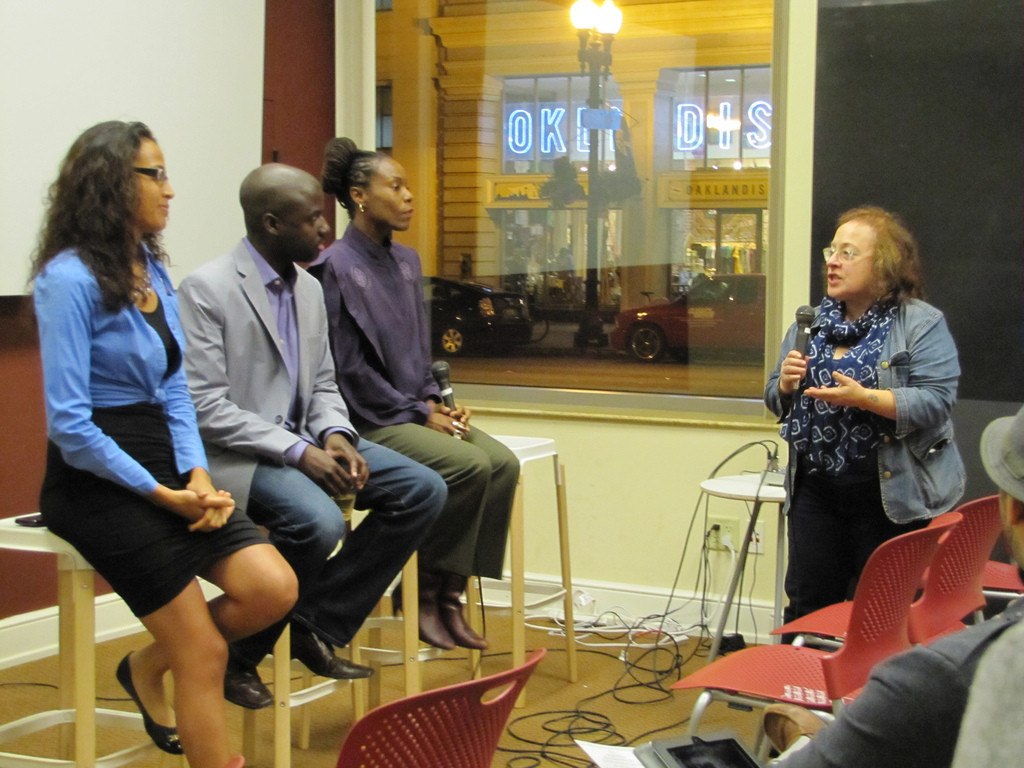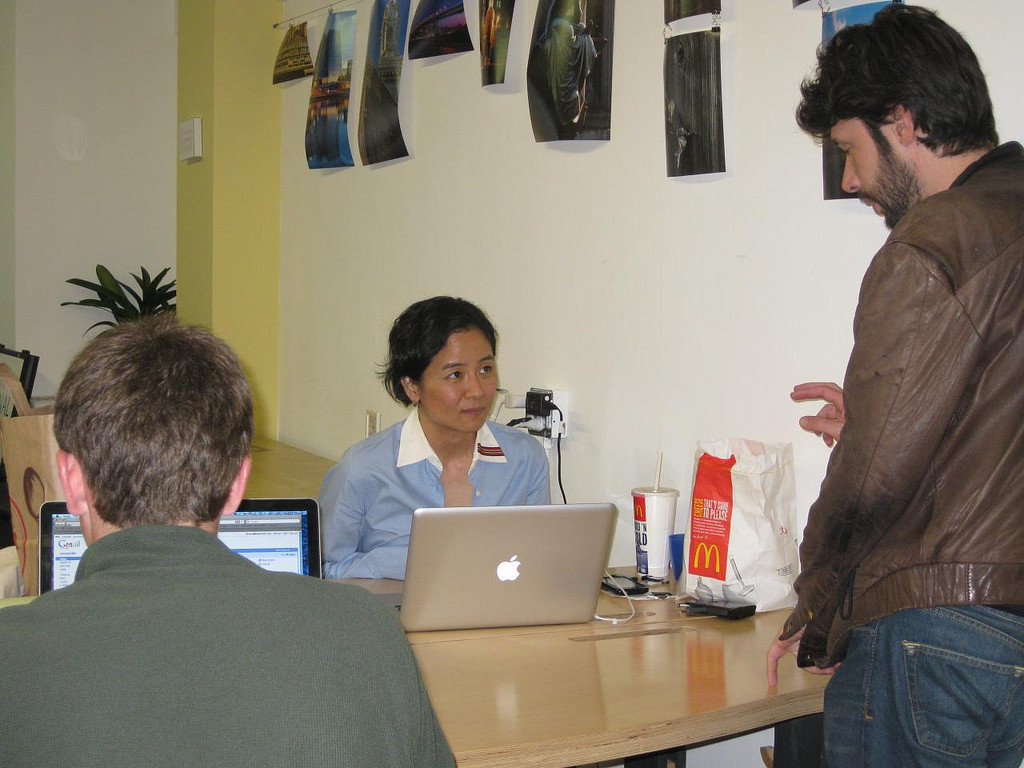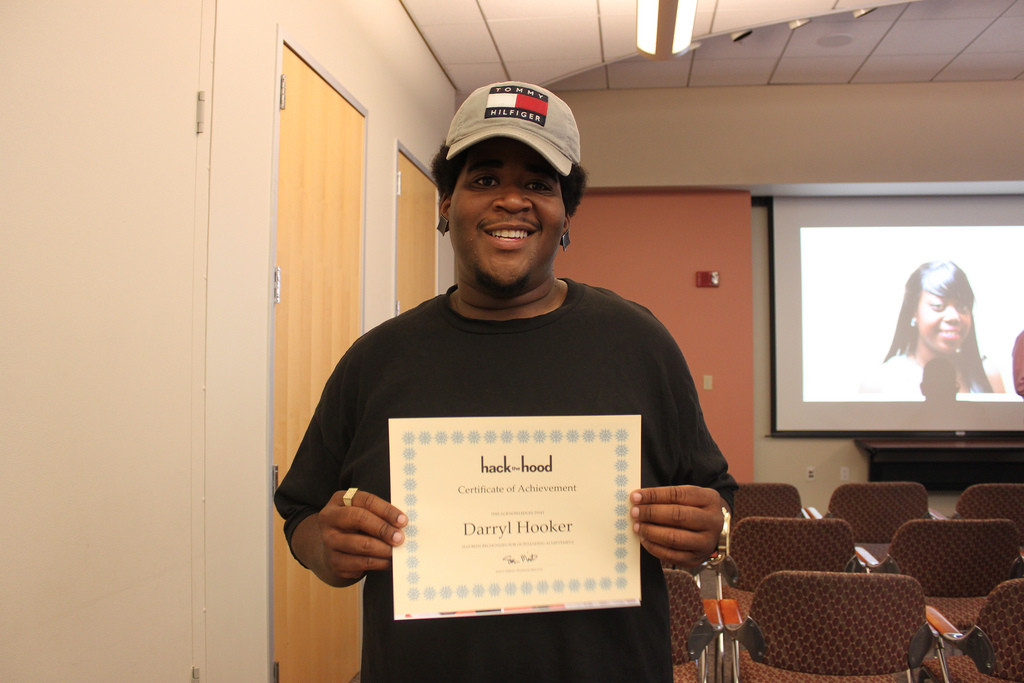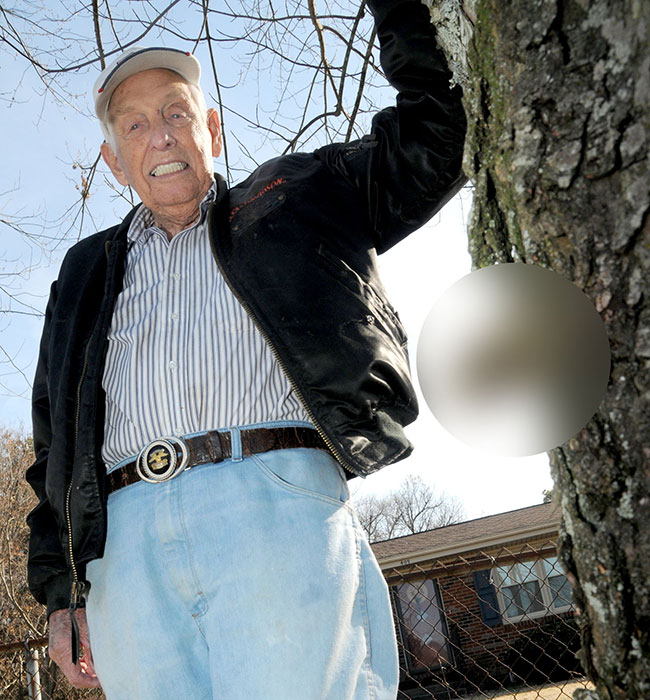On Wednesday, February 12 at 11 a.m. Pacific time, Journalism that Matters will host a hangout with Evelyn Messinger to discuss using technology to engage people in public conversations. Please join us.
It’s a common belief that the Soviet Union did not begin to crumble until Mikhail Gorbachev took power and instituted the Glassnost policy in the mid 1980s, but perhaps the first cracks in the USSR developed a few years earlier as part of a rock festival that JTM-alum Evelyn Messinger played a role in bringing to life.
On May 28, 1983, at the US Festival that Steve Wozniak produced in a remote spot just outside the sprawling reach of Los Angeles, festival participants attended a panel conversation conducted over satellite video between people in both the USSR and America. Though the panelists were celebrities and intellectual luminaries, the program incorporated questions from regular Americans and their Soviet counterparts.
Branded as Spacebridge, the hour-long program ripped away at cultural preconceptions. The participants soon saw each other as fellow human beings as they quickly united over a fear of nuclear war and a love for sports and music, which would culminate in an international concert simulcast in both countries.
“I would like to say that today, you’re not only talking about the fact that we can talk to one another, we’re actually doing it,” said Evgeny Velikhov, a panelist in Moscow who is credited as an academician. “We conquered a very terrible enemy and at the same time another enemy arose who unfortunately is still here with us. This is nuclear weaponry. Sometimes it seems to us that these are muscles. Actually they aren’t muscles. This is really a cancer and we have to perform an operation as quickly as possible to liberate ourselves from this cancer.”
Messinger would go on to help produce about 20 more Spacebridge programs over the years leading up to the 1991 dissolution of the USSR, and she has continued to focus on using technology to catalyze conversations across different communities throughout her career.
“In the beginning it was really hard to get them on U.S. TV, but you go to Moscow and it was a sensation,” said Messinger. “The idea that we would allow Russians to speak on American television was just crazy.”
None of the spacebridge programs aired on national television in America until Phil Donahue hosted “A Citizen’s Summit” in 1985. While filming the first of two spacebridges Donahue hosted, a group of protestors picketed outside the Seattle television studio.
“They have this phrase ‘all new ideas start out as heresy and end up as orthodoxy,’ and that’s exactly what happened.” said Messinger.
By 1987, Peter Jennings began hosting “Capital to Capital,” a series of spacebridges for ABC News featuring members of Congress and Soviet leaders. The five-part “Capital to Capital” series focused on issues including international security, the environment and human rights.
“I’d have to say that this played some part in the eventual collapse of the Soviet Union,” said Messinger. “I got totally hooked on this stuff thinking, ‘Wow! We can change things.’”
In 2003, as webcams and high speed internet grew in popularity, she adapted that technology in a live interactive television program for Link TV called SNAP.
More than three decades after the first spacebridge connected citizens of the USSR with people in America over a satellite connection, it’s now possible for anyone with a laptop and a high-speed connection to join a video chat with people all over the world using a tool like Google Hangout.
Last year Messinger and a handful of her colleagues received a grant from the National Center for Dialogue and Deliberation to launch Real Dialogues.
What “if you could set up a way for people to know that they could go into a facilitated conversation when something happens?” she said. “What I had proposed was to set up and test an ongoing office-hours of google hangout.”
Although they still haven’t yet realized Messinger’s vision of regularly scheduled office hours with a facilitator over Google Hangout, Real Dialogues did host two Hangouts last year on the topic of raising the minimum wage. She said that while those Hangouts were successful, it wasn’t easy recruiting people who were interested in the topic and wanted to participate.
“I’m a TV producer so there was nothing in any of it that wasn’t what I already knew to make things work,” said Messinger. “There is the technical prepping. … The persistent problems are audio. You can fix the video pretty easily but audio is hard to explain to people.”
Beyond the technical issues Messinger said there are always concerns around how guests will behave and the risk that they will be disruptive. During her tenure in traditional television this issue was usually alleviated through the use of a green room or staging area where a producer would briefly interview the guest and make sure they’ll make a positive contribution. This isn’t necessarily quite as easy to accomplish using Google Hangouts.
When it comes to audio problems, it’s sometimes helpful to insist people use headphones, and Messinger said that on some occasions she’s actually sent headphones to her guests to ensure quality audio. Other times the best approach is to judicially mute the audio of whomever isn’t speaking.
Though the initial topic of the minimum wage was decided by the group because it seemed to be a hot topic at the time, it was no longer on the top of people’s minds by the time they were able to schedule the actual Hangout. Instead of pre-selecting topics for discussion, Messingeer is hoping someday to transform the project into one where people can jump on a Hangout immediately after major news breaks.
“I would still like to find a way to let people decide,” she said. “You could just let people talk and I don’t know what might come out of it. Movements might form. There’s a big disempowerment of citizens right now, there’s a real paradox.”
Even though the news is now interactive and readers can leave comments and even engage with the newscasters over Twitter, the power she witnessed with the spacebridge broadcasts remains elusive, Messinger said.
“The ability to engage is greater than anyone could imagine 20 years ago but the voice of the people is much much weaker than it used to be. The voice of the people keeps getting eroded further and further away,” she said. “It’s this sort of thing that could lay out the template for how citizen engagement could actually become a real ongoing force in political change.”




